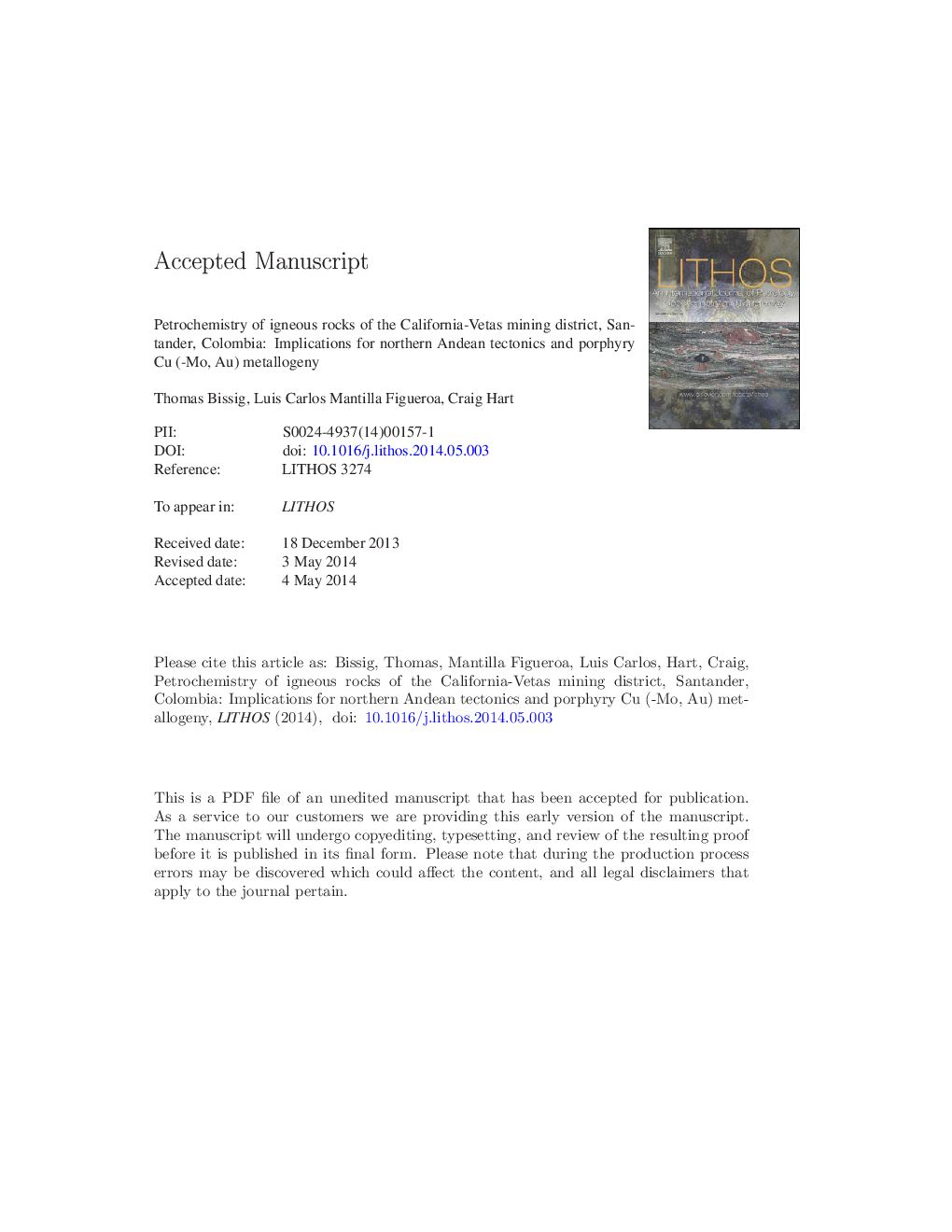| Article ID | Journal | Published Year | Pages | File Type |
|---|---|---|---|---|
| 6440813 | Lithos | 2014 | 42 Pages |
Abstract
The geochemical signature suggests that late Miocene granodiorite porphyries represent oxidized and water-rich melts. However, in contrast to many other porphyry districts in the Andes, they do not have low Y (<Â 15Â ppm) or depleted HREE, which together with the high Sr, Al and Na content indicates that neither plagioclase nor garnet were important residual phases in the MASH zone at the base of the crust. The trough shaped MREE suggest that amphibole was present in the source. The 87Sr/86Sr values of the Miocene rocks are consistent with a mantle derived melt which interacted with the radiogenic continental crust. The magmatism occurred above the shallow subducting Caribbean slab attributed to subduction of part of the Caribbean plateau (a.k.a. proto-Caribbean oceanic complex). It may be related to slab break-off and incursion of hot asthenospheric mantle, but dehydration of the Caribbean slab probably provided additional volatiles which made amphibole a major residual phase and provided water for the hydrous porphyry related magmas.
Related Topics
Physical Sciences and Engineering
Earth and Planetary Sciences
Geochemistry and Petrology
Authors
Thomas Bissig, Luis Carlos Mantilla Figueroa, Craig J.R. Hart,
